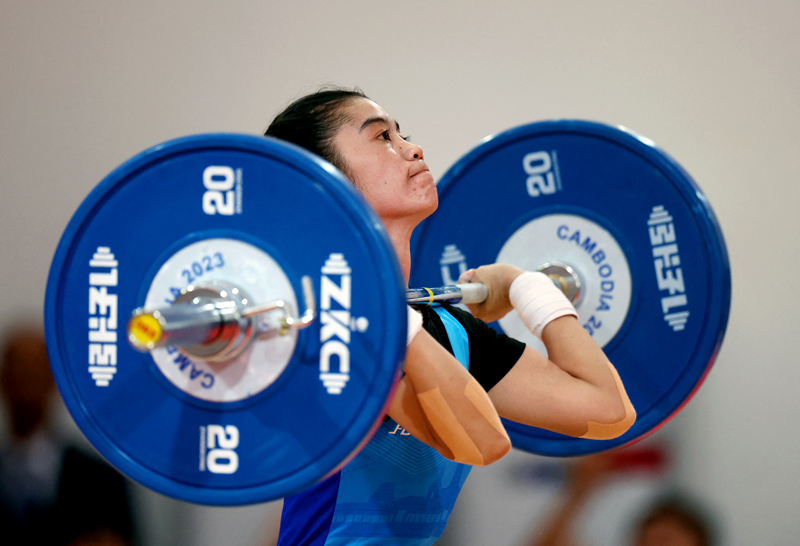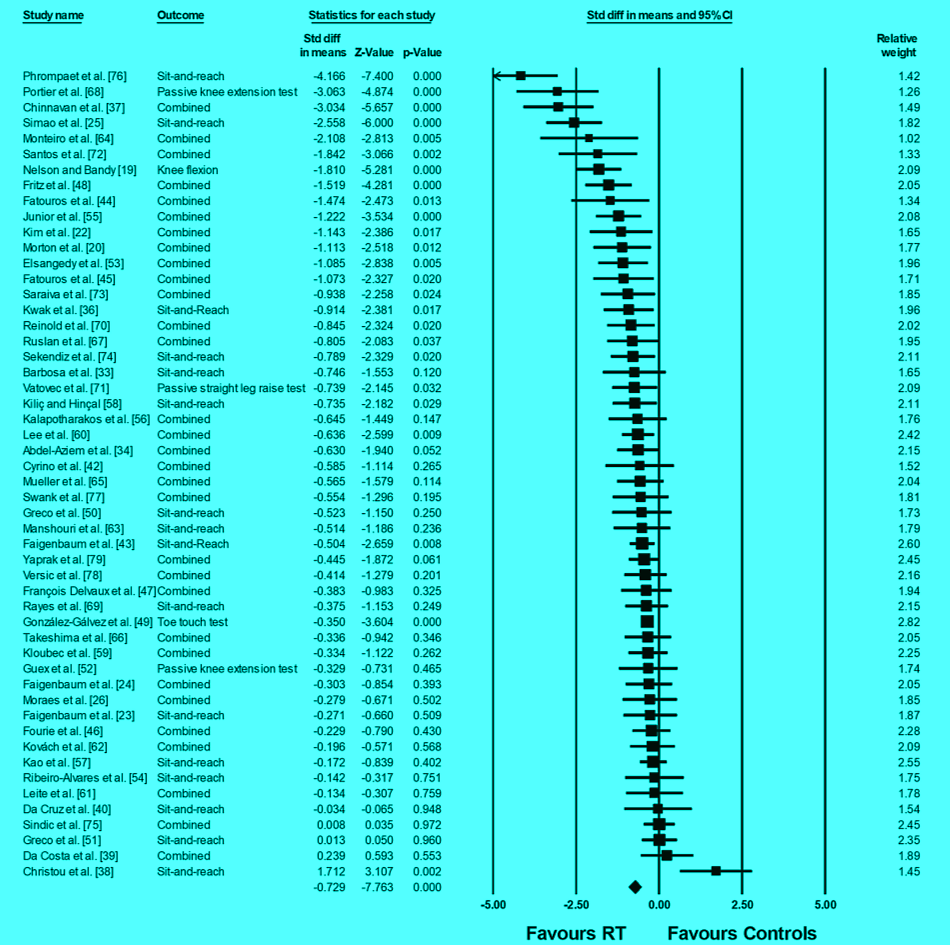You are viewing 1 of your 1 free articles. For unlimited access take a risk-free trial
Strength training and flexibility: truth vs. hype
Many people believe that a major drawback of strength training is a reduction in joint range of motion, but is this true? Andrew Sheaff looks at definitive evidence
Resistance training has become a critical component in the sports preparation of athletes of all types. However, that certainly wasn’t always the case. Prior to the general acceptance of strength training in sport, the common belief was that resistance training, and lifting weights in particular, would lead to ‘muscle-bound’ athletes. For this reason it wasn’t just that resistance training wasn’t performed, it was actively avoided.
Persistent fears
Over time, it has become apparent that resistance training provides a net benefit to performance, and even if resistance training does promote inflexibility, the argument is that including it still allows athletes to accomplish their goals. However, many athletes have noticed that resistance training actually has the opposite effect, working to improve joint range of motion. For instance, athletes who participate in the sport of weightlifting demonstrate incredible flexibility throughout the entire body, even while lifting tremendously large loads on a daily basis.
Yet despite these anecdotes, and as resistance training becomes a key component of sports preparation, these fears still persist. The typical person - even the typical athlete - still has the perception that resistance training impairs flexibility, even though the opposite seems to be true. Fortunately, the research literature examining the impact of resistance training on joint range of motion is accumulating. So much so, that a group of researchers decided to analyze all of the data to determine the impact of resistance training on range of motion once and for all.
The research
One of the challenges with scientific research in the exercise and sports performance field is that many similar, yet differently structured studies are performed related to a specific topic. And because of the importance of context in all training related outcomes, the results of these studies can often differ slightly, leading to a lot of confusion. This is especially true when it’s not readily apparent why these differences occur. However, once a significant body of literature emerges, it becomes possible to use certain statistical analyses to determine parse out the subtleties involved.
As resistance training is a topic that has been widely studied across many contexts, an international research group decided to use these statistical strategies to determine the impact of resistance training on range of motion(1). They used 55 different studies in their final analysis. Because these studies were all different in small ways, they were able to analyze the impact of sex, prior activity levels, age, frequency of training, and duration of training.
They also performed multiple comparisons between different types of training. They compared the impact of resistance training on range of motion to a control group. They compared resistance training to stretch training. And they compared resistance training and stretch training to stretch training alone. The goal was to get a nuanced perspective on the impact of resistance training on range of motion, rather than just a simple yes or no answer.
What they found
The results were crystal clear. Contrary to the perception of many, resistance training positively impacts joint range motion, rather than hinders it (see figure 1). It does so in a manner that is equally effective as stretch training, as no differences were found between the protocols. The same result was found when the combined application of resistance training and stretch training was compared to stretch training alone.
Interestingly, it does not appear that sex or the type of contraction influences whether resistance training enhances range of motion. Likewise, differences in age, training frequency, or the duration of training had no impact on outcomes. Further, positive results were found at every joint studied, so it does not appear that these results are limited to specific joints or specific muscles. In plain English, no matter your sex, age, training habits or muscles trained, strength training will increase your joint range of movement – not decrease it.
Figure 1: Effect of resistance training on joint range of motion
Studies represented by squares to the left of the zero line (ie negative numbers) showed that joint range of motion was improved by resistance training. Studies to the right of the zero line (just two) showed that range of motion was hindered by resistance training. The overwhelming outcome was that joint range of motion was improved by resistance training.
There were however some important caveats. While resistance training improved range of motion, this only appeared to be the case when external loading was used. In particular, bodyweight training was not found to positively influence range of motion. However, it’s not immediately clear if this is due to the nature of the training, or because many individuals do not perform these activities through a full range of motion. It’s possible that when there is an intent to use full range of motion with these exercises, positive outcomes will follow. It was also found that while both trained and active participants were able to improve range of motion, this effect was more pronounced in untrained individuals. This effect is likely due to the increased novelty of the resistance stimulus, as well as the greater room for improvement in sedentary individuals.
Applying these findings
The evidence is clear. Rather than impairing range of motion, strength training actually improves joint range of motion. If the belief that resistance training was going to impair your range of motion has prevented you from resistance training, it’s time to start implementing resistance training as that belief is unfounded. Not only will resistance training not impair your range of motion, it will almost certainly enhance it!
Better still, it doesn’t matter who you are or how you choose to train. All types of resistance training can positively impact range of motion. Likewise, it doesn’t matter how often you train, or how long you train for. Further, these benefits are seen regardless of your age, your sex, or your training status, although greater benefits are likely to be seen if you haven’t been active. It’s important to note that the range of motion benefits from resistance training will be optimized by training through a full range of motion. This is particularly true if you choose to implement bodyweight resistance training.
While the benefits of resistance training for joint range of motion are clear, what about stretching? If the same gains in range of motion can be achieved through resistance training as can be achieved through stretching, is stretching a waste of time? Just from the perspective of improvements in range of motion, it appears that yes, stretching may be unnecessary. However, if it’s something that you enjoy and perceive benefit from, there’s no reason to stop doing so. At the same time, it could be worth experimenting with reducing the amount of stretching you do and see if there is a noticeable difference. If not, simply stick with your resistance training!
References
1. Sports Med. 2023 Mar;53(3):707-722. doi: 10.1007/s40279-022-01804-x. Epub 2023 Jan 9
Related Files
Newsletter Sign Up
Testimonials
Dr. Alexandra Fandetti-Robin, Back & Body Chiropractic
Elspeth Cowell MSCh DpodM SRCh HCPC reg
William Hunter, Nuffield Health
Newsletter Sign Up
Coaches Testimonials
Dr. Alexandra Fandetti-Robin, Back & Body Chiropractic
Elspeth Cowell MSCh DpodM SRCh HCPC reg
William Hunter, Nuffield Health
Keep up with latest sports science research and apply it to maximize performance
Today you have the chance to join a group of athletes, and sports coaches/trainers who all have something special in common...
They use the latest research to improve performance for themselves and their clients - both athletes and sports teams - with help from global specialists in the fields of sports science, sports medicine and sports psychology.
They do this by reading Sports Performance Bulletin, an easy-to-digest but serious-minded journal dedicated to high performance sports. SPB offers a wealth of information and insight into the latest research, in an easily-accessible and understood format, along with a wealth of practical recommendations.
*includes 3 coaching manuals
Get Inspired
All the latest techniques and approaches
Sports Performance Bulletin helps dedicated endurance athletes improve their performance. Sense-checking the latest sports science research, and sourcing evidence and case studies to support findings, Sports Performance Bulletin turns proven insights into easily digestible practical advice. Supporting athletes, coaches and professionals who wish to ensure their guidance and programmes are kept right up to date and based on credible science.











